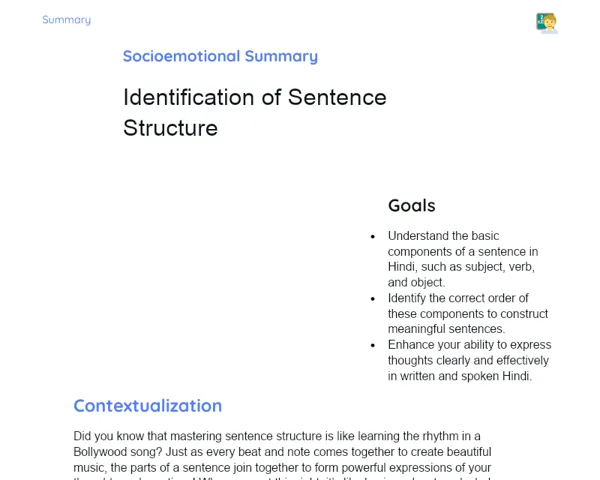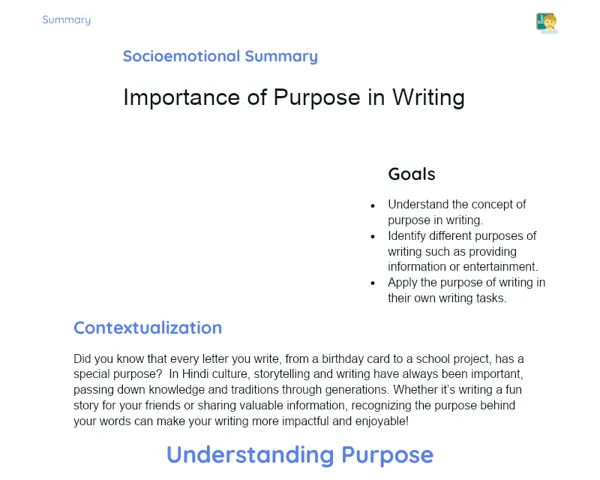## Goals
1. Understand the concept of linguistic diversity and its significance in communication.
2. Analyze the interrelationships between different languages and their cultural contexts.
3. Develop skills to appreciate and critique various expressions of language in everyday life.
Contextualization
Did you know that India is home to over 122 major languages and 1599 other languages? 🌍 Each of these languages carries unique expressions, histories, and cultural nuances. In our rich linguistic tapestry, understanding language diversity helps us grasp the beautiful interplay of cultures and identities that shape our daily lives. Whether it's a local dialect like Haryanvi or widely spoken languages like Hindi and English, each language offers a window into the heart of its people. Let’s unlock these treasures together!
Subject Relevance
To Remember!
Linguistic Diversity
Linguistic diversity refers to the variety of languages spoken across different regions and communities, each reflecting unique cultural identities and practices. In India, this diversity is not merely a collection of dialects; it's a robust tapestry weaving stories, traditions, and ways of life. The constant interaction among languages creates a rich environment where borrowings and exchanges happen freely, leading to the evolution of languages and enriching communication. Each language acts as a vessel of its people's culture, history, and worldview, contributing to the overall diversity that we celebrate.
-
Cultural Identity: Each language encapsulates the cultural heritage of its speakers, preserving traditions, folklore, and unique perspectives.
-
Communication Dynamics: Linguistic diversity enhances the richness of interpersonal communication, creating opportunities for deeper connections and understanding.
-
Promotes Tolerance: Exposure to multiple languages fosters respect and tolerance for different cultures, helping to bridge gaps in a multicultural society.
Interrelationships of Languages
Languages are intertwined through historical relationships, borrowings, and influences. For instance, Hindi has borrowed extensively from Sanskrit, Persian, Arabic, and English, showing how languages evolve and adapt to their sociocultural environments. Understanding these interrelationships allows us to appreciate how meanings, expressions, and communication styles shift and merge across cultures. The melting pot of languages enables speakers to navigate linguistic landscapes more effectively, promoting mutual understanding and empathy in diverse settings.
-
Language Evolution: Interrelationships showcase how languages are dynamic and continually evolving, reflecting changes in society and culture.
-
Shared Vocabulary: Many languages share vocabulary, leading to an enriched lexicon and communication possibilities across different language speakers.
-
Cultural Exchange: The interrelationships invite cultural exchanges that allow for greater understanding and collaboration among diverse groups.
Expressions in Everyday Language
Expressions are the ways language is used to convey emotions, ideas, and cultural values in everyday life. This includes idioms, proverbs, slang, and regional dialects that reveal local customs and beliefs. By analyzing expressions, students can comprehend the contextual nuances that shape communication. For example, the phrase 'तुम क्या सोचे हो?' (What do you think?) can indicate not just a question but an invitation to share one's thoughts, reflecting the culture of collaboration embedded in language.
-
Contextual Nuances: Expressions can vary in meaning based on context; understanding this enables clearer communication.
-
Cultural Reflection: Language expressions often mirror societal values and behaviors, offering insights into a community's way of life.
-
Creativity in Language: The use of idioms and unique expressions showcases the creativity and richness of a language, encouraging students to think critically about their usage.
Practical Applications
-
Language Learning: Encouraging students to learn a new language can deepen their understanding of linguistic diversity and cultural nuances, enhancing their communication skills.
-
Cultural Exchange Programs: Participating in or organizing exchange programs can promote direct interactions with speakers of other languages, fostering real-world application of what they've learned.
-
Media Consumption: Engaging with content in different languages—like films, music, or literature—can enhance appreciation for linguistic diversity and its interrelationships.
Key Terms
-
Linguistic Diversity: The coexistence of multiple languages within a specific region or community, reflecting varied cultural identities.
-
Interrelationship: The connections and influences that languages have on one another, often leading to language borrowing and evolution.
-
Expressions: The specific phrases or idioms used within a language that convey meaning, emotions, and cultural significance.
Questions for Reflections
-
How do you think learning about different languages can enhance your understanding of your own culture?
-
In what ways have you experienced language influencing relationships in your own life?
-
Can you think of a situation where knowing a different language or dialect could have changed the outcome of a conversation?
Language Exchange Adventure!
Embark on a fun language exchange journey! Your mission is to connect with a peer or family member who speaks a different language or dialect from you. Document your conversations, focusing on unique expressions, phrases, and cultural insights that emerge during your discussions. This challenge not only enhances your understanding of linguistic diversity but also strengthens your communication skills and cultural appreciation.
Instructions
-
Find a partner who speaks a different language or dialect.
-
Initiate a conversation, asking them to share interesting phrases or expressions from their language.
-
Take notes on these expressions along with their meanings and contexts.
-
Discuss how these expressions reflect the culture of the language.
-
Create a short presentation or a creative visual piece (like a poster) showcasing what you’ve learned from this exchange.



